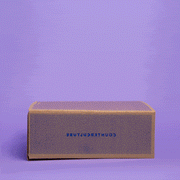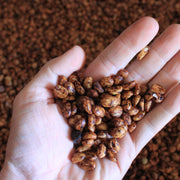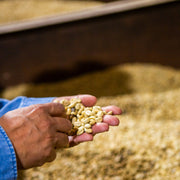In April of 2025, new tariffs were implemented on nearly all imported goods, including green coffee. This is how we are approaching them at Counter Culture Coffee.
In April, new tariffs were implemented on nearly all imported goods, including green coffee. While exemptions were made for Mexico and Canada under the USMCA and some reciprocal tariffs were paused, the baseline 10% tariff took effect. On July 7th, higher, country-specific tariffs were announced, set to begin on August 1st.
For the coffee industry, this is a significant shift. The U.S. produces less than 1% of the coffee it consumes, so nearly every roaster faces added costs at the border. Initially, the impact was softened by the existing, stateside inventory and the hope that coffee might be exempted. But as that buffer fades and new tariffs take hold, many coffee companies are now paying higher costs. Businesses face a difficult choice:
-
Absorb the added cost,
-
Increase prices to their customers,
-
Or strike a balance by doing both.
At Counter Culture, we’re navigating this decision thoughtfully and, in true CCC fashion, transparently. The broader context of what’s been happening in the coffee industry makes this an especially complex challenge—one we’ll unpack in the following sections.
A Global Coffee Shortage Sends Prices Up
In early 2025, we raised prices to reflect a new benchmark for high-quality coffee. In January and April, our roasted coffee cost per pound rose by $0.42 compared to the same period in 2024. About 75% of this price is retained at origin, which our Transparency Reports and website refer to as the FOB price.
This change was driven by a global coffee shortage that spiked the C market in October 2024, just as the Southern Hemisphere's harvest was wrapping up. Some of our contracted inventory never materialized, and by the Northern Hemisphere harvest, producers were facing low yields and rising production costs, both of which pushed prices higher.
Despite these challenges, we remained profitable during this timeframe in both years.

Then came another blow: tariffs.
Tariffs Hit Hard
In April, a new 10% tariff was imposed on all imports, including green coffee. For us, that adds approximately $0.50 per pound, which would have amounted to an additional $600,000 in costs in the first four months of 2025 and taken our profit margin from 0.65% to -3.85%: significantly in the red. We received our first tariff-impacted shipment in May and expect our inventory to transition fully in July.
We received our first tariff-impacted shipment in May and expect our inventory to transition fully in July.
Doing Everything We Can—Before Raising Prices
We recognize that we’ve already raised prices this year, and we're cautious about doing it again. Our customers value stability, and while some factors are beyond our control, we’re doing everything possible to limit the impact. With that in mind, we’re taking steps to reduce operating costs through the rest of 2025, including the following:
-
Canceling our annual company conference
-
Reducing reliance on IT consultants
-
Delaying hiring across the company, including senior-level roles
-
Asking teams to cut travel budgets by 10%
-
Moving quarterly leadership meetings to a remote format
-
Cutting back on advertising
-
Delaying some planned facility upgrades
These measures will help; however, if tariffs remain in place and sales continue as projected, the added coffee cost could reach $2 million.
We know defeatism isn’t the answer, but we also recognize that optimism alone won’t close the gap. Eventually, we will need to adjust our prices to more accurately reflect the true cost and value of our product.
Where Your Money Goes
We know you have a choice in where you buy your coffee, and we’re deeply grateful you choose to support Counter Culture. That choice means something to us. We believe that practicing transparency—about our costs, our challenges, and our values—not only builds trust but also makes us stronger and more accountable.

For every dollar you spend at Counter Culture Coffee 50% goes toward the coffee. Another 17% supports our staff through salaries, benefits, and 401(k) matching. Shipping accounts for 8%, making it our third-largest expense. We dedicate 1% to sustainability initiatives. While that may seem small, it’s a meaningful investment, including ongoing support for our Seeds and Bloom funds, regardless of profitability. We also spend 3% on IT. Back in 1995, that would’ve seemed unthinkable—but today, strong systems are essential to running a modern business. In 2024, we ended the year with a modest 1.1% profit, an improvement from the previous year. We were especially proud of our two profitable quarters, which allowed us to distribute profit-sharing checks to all staff, recognizing our team’s hard work.
In 2024, we ended the year with a modest 1.1% profit, an improvement from the previous year. We were especially proud of our two profitable quarters, which allowed us to distribute profit-sharing checks to all staff, recognizing our team’s hard work.
Looking Ahead, Guided by Our Values
There’s still a lot we can’t predict, but after 30 years in business, we’re no strangers to challenge. As always, we’ll face this one with integrity, guided by our core values: quality, sustainability, and education. Currently, we are not raising prices. While we can’t promise what the future holds, we can promise this: every decision we make will reflect our commitment to great coffee, a strong and lasting business, and a better-informed community.






